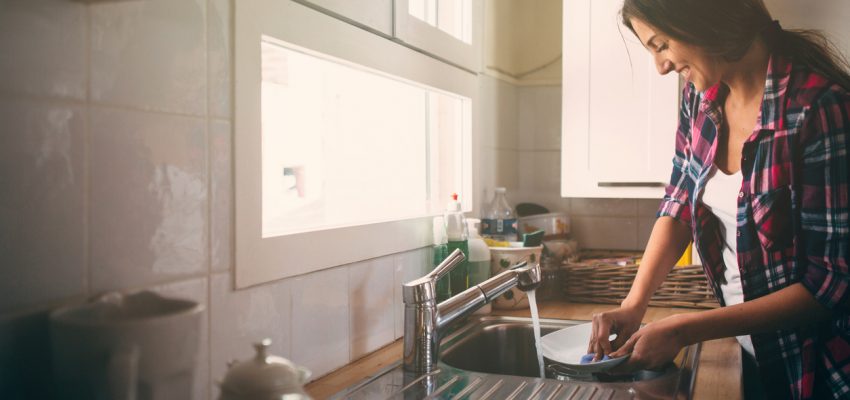The Canadian government does not require companies to list the ingredients on their packaging. Those that do, like AspenClean and Seventh Generation, are rare. A little research reveals that most cleaners are not so ‘clean’ after all. Artificial substances such as surfactants, carcinogens and fragrances are all too common in the cleaning industry, and have been linked with a myriad of health issues including cancer, hormone disruption, skin conditions, and breathing issues like asthma. Not to mention their hazardous environmental effects.
Here are seven of the most common toxic chemicals you’ll find lurking in the supermarket cleaning aisle. By avoiding the following culprits, you’ll be able to enjoy a cleaner home and healthier body without any negative effects on the planet either.
Sodium laureth sulfate
Present in almost everything from shampoos to all-purpose cleaners to dish soaps. Sodium laureth sulfate is a foaming agent that has been known to cause skin conditions such as dermatitis. YOU know how you end up with dry and cracked skin after doing the dishes? This is a good indicator that your dish soap contains sodium laureth sulfate.
Parfum (Fragrance)
Everyone wants their home and body to smell great, but that ‘clean’ smell you get from shower gels and kitchen cleaners is very often from artificial perfumes. Your skin absorbs them right into your system. Perfume has been associated with asthma, headaches and even cancer. Look for fragrances on the ingredient label and avoid them where possible.
Formaldehyde
A colorless gas present in everything from carpets, to cosmetics, to cleaning products. Formaldehyde is officially classed as a carcinogen by the European Chemical Agency (ECHA). This chemical is linked to cancer of the nose and throat, as well as asthma and eye irritation.
Triclosan
This one is a common ingredient in antibacterial hand wash and sanitizers. We’ve been trained to believe that antibacterial soaps offer greater protection against pathogens, but it turns out that they are no better than regular soap and water! Triclosan is toxic to aquatic life. The chemical gained public attention last year when the FDA banned its use in hand and body wash products, but Canada has yet to follow suit.
DEA-related Ingredients
Diethanolamine is an artificial form of coconut oil used as a foaming agent in creamy personal-care products like moisturizers and shampoos. It’s a recognized cause of asthma with possible cancer links.
Dibutyl phthalate
A plasticizer used in nail-care products and some multi-purpose cleaners. It’s thought to be an endocrine disrupter that can also negatively impact reproductive systems.
Parabens
Parabens are toxic preservatives that are readily absorbed by our skin, causing hormone imbalances and issues with reproductive functions.
The best thing you can do is avoid these chemicals altogether. Start by taking a read of your personal care and cleaning products, and throw out anything containing the above ingredients. Then, stock up on natural products with good ingredient disclosure or make your own. Better yet, look for those that carry the Ecocert label, which is present on all products and is a surefire way to know that your product is safe, healthy, and environmentally-friendly. You can also head to the Environmental Working Group’s online guide to healthy cleaning, where you’ll find ratings and evaluations for over 2,000 cleaning products. After all, your home is the one environment you have control over, so why not make it as healthy and natural as possible?





Pingback: Natural All-purpose Cleaner Recipes That Work!